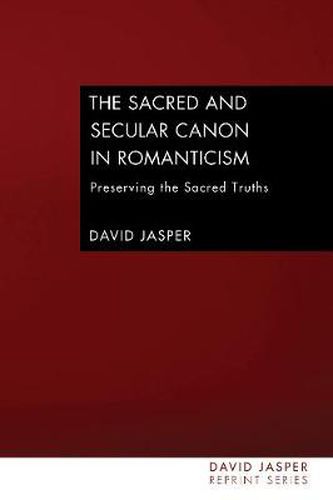Readings Newsletter
Become a Readings Member to make your shopping experience even easier.
Sign in or sign up for free!
You’re not far away from qualifying for FREE standard shipping within Australia
You’ve qualified for FREE standard shipping within Australia
The cart is loading…






This book focuses on some of the greatest writers and artists of European Romanticism, including S. T. Coleridge, Wordsworth, J. M. W. Turner, Goethe, Holderlin, and, in the later nineteenth century, Matthew Arnold. Concluding with a discussion of the significance of Romanticism for our understanding of postmodernity, its various chapters explore the place of the biblical canon as the central element in the shift from the sacred to the secular, and the place of the Bible in the development of our concept of Weltliteratur, or world literature, as definitive of culture. In Romanticism, the Bible is situated between two worlds–the ancient and the modern–and remains central in our postmodern world as the power of traditional religious language fades and gives way to new perceptions of the sacred in poetry and art. This book will be of interest to all concerned with art, literature, and the development of biblical criticism and religious thought.
$9.00 standard shipping within Australia
FREE standard shipping within Australia for orders over $100.00
Express & International shipping calculated at checkout
This book focuses on some of the greatest writers and artists of European Romanticism, including S. T. Coleridge, Wordsworth, J. M. W. Turner, Goethe, Holderlin, and, in the later nineteenth century, Matthew Arnold. Concluding with a discussion of the significance of Romanticism for our understanding of postmodernity, its various chapters explore the place of the biblical canon as the central element in the shift from the sacred to the secular, and the place of the Bible in the development of our concept of Weltliteratur, or world literature, as definitive of culture. In Romanticism, the Bible is situated between two worlds–the ancient and the modern–and remains central in our postmodern world as the power of traditional religious language fades and gives way to new perceptions of the sacred in poetry and art. This book will be of interest to all concerned with art, literature, and the development of biblical criticism and religious thought.